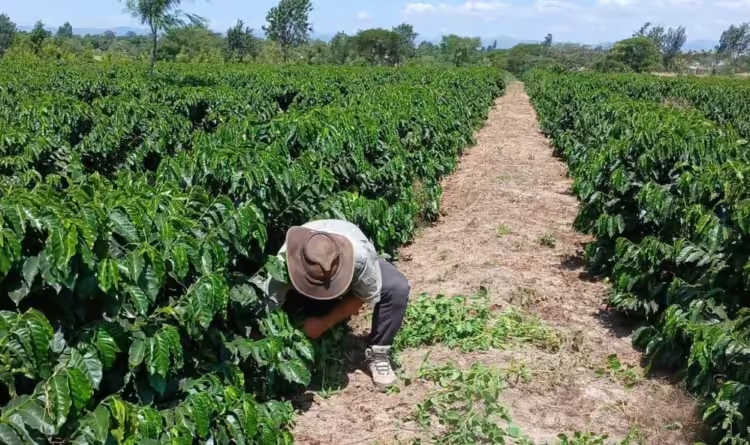

Uncover how the mission in Tanzania is utilizing cutting-edge know-how to optimize water utilization, enhance farm sustainability, and form the way forward for espresso manufacturing worldwide.
BY VASILEIA FANARIOTI
SENIOR ONLINE CORRESPONDENT
Photographs courtesy of Massimo Battaglia
As local weather change accelerates, espresso producers are going through unprecedented challenges. Rising temperatures, erratic rainfall, and extended droughts threaten the fragile stability wanted for espresso cultivation. Conventional information alone can not sustain with these shifting environmental circumstances. That is the place the ConSenso mission steps in.
A collaboration between Accademia del Caffè Espresso, Challenge Nature (PNAT), and Cisco, ConSenso leverages cutting-edge know-how to watch the well being of espresso vegetation at Utengule Espresso Farm in Tanzania. Utilizing solar-powered sensors and a sophisticated knowledge transmission community, the mission goals to optimize water utilization, enhance farm sustainability, and finally develop tips that would reshape espresso farming worldwide.
To achieve deeper insights into its progress, we sat down with Massimo Battaglia, espresso historical past & analysis chief at Accademia del Caffè Espresso.


Uncovering Espresso’s Bioelectric Indicators
“For us, it’s important to be on the forefront of technological innovation whereas remaining deeply related to espresso vegetation,“ Massimo states. On the core of ConSenso is a community of 52 solar-powered sensors, a climate station, and plant-growth displays, all designed to seize knowledge in actual time.
These sensors monitor a wide range of parameters: electrical exercise, hydration ranges, soil temperature, and humidity, amongst others. “The plant sensors perform like heartbeat displays for timber,“ Massimo explains. “They permit us to take heed to the vegetation and reply to their wants relatively than imposing options blindly.“
The information is transmitted through LoRaWAN know-how—a long-range, low-power wi-fi community—to an information heart in Florence, Italy, the place researchers analyze traits and correlations. One key discovery thus far has been the sturdy connection between soil moisture and plant development. “We’ve seen that increased floor humidity considerably helps the wholesome growth of espresso vegetation,“ Massimo notes. “Conversely, elevated temperatures, significantly throughout dry spells, negatively impression development.“
A Espresso Farm as a Carbon Sink
Past plant well being, ConSenso can be measuring the farm’s means to retailer carbon. Espresso farms, particularly these with shade timber, have the potential to behave as pure carbon sinks, absorbing CO2 and lowering the trade’s general carbon footprint.
“Our findings verify that espresso plantations—when managed with shade timber—perform as productive forests,“ Massimo says. “They retailer carbon, making them a necessary a part of local weather mitigation methods. This might additionally open up alternatives for espresso producers to earn carbon credit sooner or later.“
Challenges in Excessive-Tech Espresso Analysis
Regardless of its potential, implementing a sophisticated technological system on a working farm has not been with out challenges. “One of many largest obstacles is balancing high-tech analysis with day-to-day farm operations,“ Massimo admits. “Farmers want options that aren’t solely scientifically sound but additionally sensible and simple to combine.“
Farmers at Utengule have proven eager curiosity within the mission, desperate to see how data-driven farming may enhance productiveness and resilience. “They’re ready for concrete outcomes—tips that may assist them optimize sources and enhance sustainability,“ Massimo says. “On the finish of the following agricultural cycle, we hope to offer them with actionable insights.“


Scaling Up: Can Smallholder Farmers Entry This Expertise?
The potential functions of ConSenso stretch far past Tanzania. “The know-how is adaptable to totally different coffee-growing circumstances—altitude, soil kind, and local weather extremes,“ Massimo explains. However how possible is it for smallholder farmers, who make up the vast majority of the espresso trade?
“To undertake these applied sciences, smallholders might want to collaborate via cooperatives or obtain authorities and worldwide help,“ Massimo acknowledges. “They’ll’t do it alone. They didn’t trigger local weather change, but they bear the brunt of its penalties. It’s essential that they obtain the assistance they want.“



Water Shortage: The Defining Difficulty for Espresso in Mbeya
Within the Mbeya area of Tanzania, the place Utengule is situated, water availability is more and more unpredictable. “Water is the defining concern right here,“ Massimo stresses. “ConSenso goals to offer espresso farmers with exact indicators to watch water stress and optimize irrigation.“
One placing discovering from the mission has been the position of shade timber in water retention. “Strategic shade administration helps espresso vegetation preserve water and develop extra effectively,“ Massimo says. “The best stability of shade timber could make a plantation extra resilient to local weather shifts.“



The Way forward for Espresso Farming: A Tech-Pushed Revolution?
With IoT sensors, AI-driven analytics, and real-time knowledge streaming into analysis facilities, espresso farming is turning into more and more tech-driven. “The following frontier,“ Massimo predicts, “is shifting from reactive to proactive farming. As a substitute of ready for indicators of stress, we will anticipate plant wants and adapt earlier than issues come up.“
As ConSenso strikes ahead, its findings may assist form new world methods for sustainable espresso manufacturing. “The important thing takeaway from this mission,“ Massimo concludes, “is that the way forward for espresso farming lies in listening—to the setting, to knowledge, and most significantly, to the vegetation themselves.“
ABOUT THE AUTHOR
Vasileia Fanarioti (she/her) is a senior on-line correspondent for Barista Journal and a contract copywriter and editor with a main give attention to the espresso area of interest. She has additionally been a volunteer copywriter for the I’M NOT A BARISTA NPO, offering content material to assist educate individuals about baristas and their work.
Subscribe and Extra!
As all the time, you may learn Barista Journal in paper or digital format. Subscribe right here to get your personal hardcopy of every concern delivered. Learn the April + Might 2025 concern without spending a dime with our digital version.
And for greater than three years’ value of points, go to our digital version archives right here.


